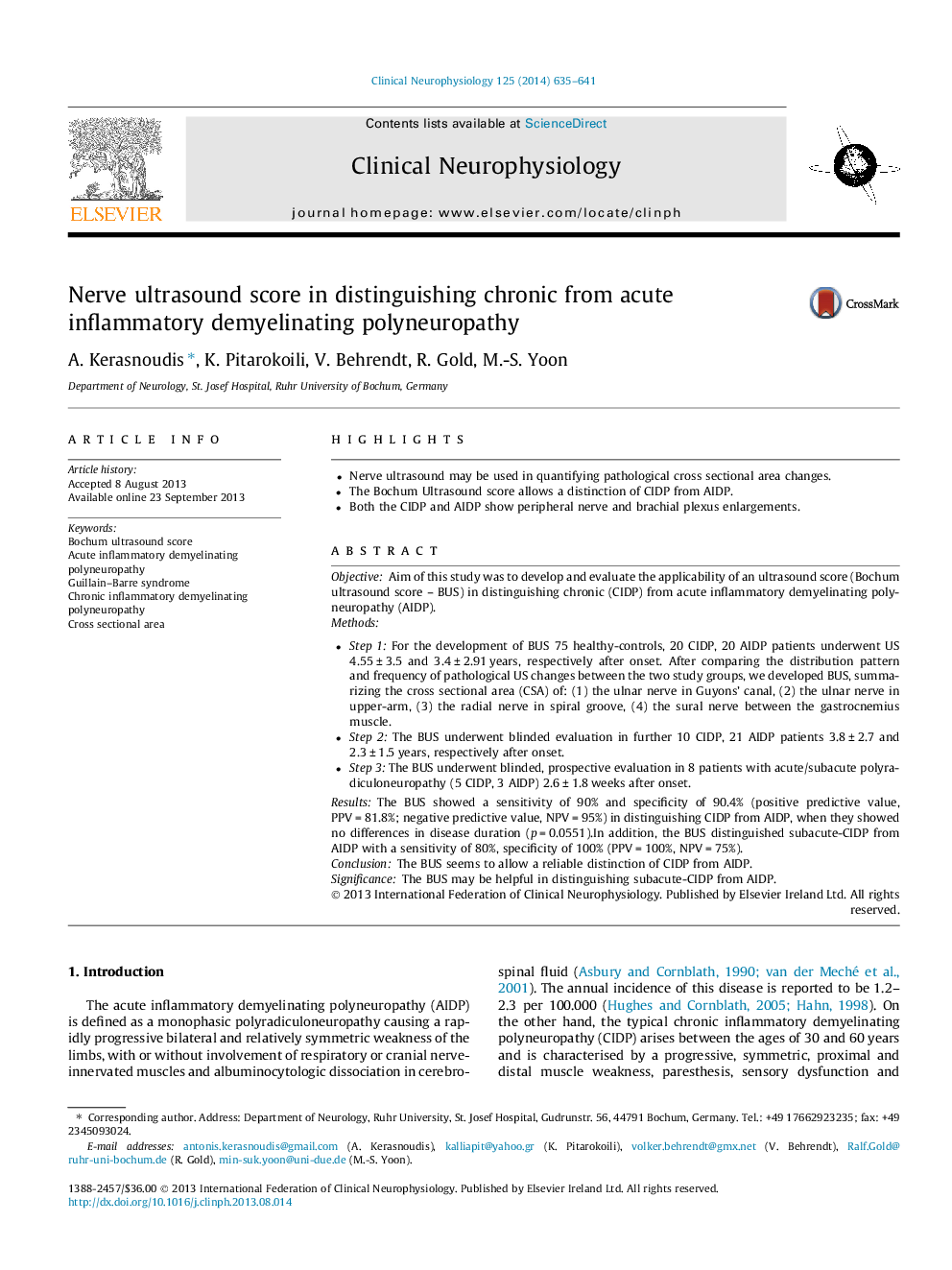| Article ID | Journal | Published Year | Pages | File Type |
|---|---|---|---|---|
| 3043956 | Clinical Neurophysiology | 2014 | 7 Pages |
•Nerve ultrasound may be used in quantifying pathological cross sectional area changes.•The Bochum Ultrasound score allows a distinction of CIDP from AIDP.•Both the CIDP and AIDP show peripheral nerve and brachial plexus enlargements.
ObjectiveAim of this study was to develop and evaluate the applicability of an ultrasound score (Bochum ultrasound score – BUS) in distinguishing chronic (CIDP) from acute inflammatory demyelinating polyneuropathy (AIDP).Methods•Step 1: For the development of BUS 75 healthy-controls, 20 CIDP, 20 AIDP patients underwent US 4.55 ± 3.5 and 3.4 ± 2.91 years, respectively after onset. After comparing the distribution pattern and frequency of pathological US changes between the two study groups, we developed BUS, summarizing the cross sectional area (CSA) of: (1) the ulnar nerve in Guyons’ canal, (2) the ulnar nerve in upper-arm, (3) the radial nerve in spiral groove, (4) the sural nerve between the gastrocnemius muscle.•Step 2: The BUS underwent blinded evaluation in further 10 CIDP, 21 AIDP patients 3.8 ± 2.7 and 2.3 ± 1.5 years, respectively after onset.•Step 3: The BUS underwent blinded, prospective evaluation in 8 patients with acute/subacute polyradiculoneuropathy (5 CIDP, 3 AIDP) 2.6 ± 1.8 weeks after onset.ResultsThe BUS showed a sensitivity of 90% and specificity of 90.4% (positive predictive value, PPV = 81.8%; negative predictive value, NPV = 95%) in distinguishing CIDP from AIDP, when they showed no differences in disease duration (p = 0.0551).In addition, the BUS distinguished subacute-CIDP from AIDP with a sensitivity of 80%, specificity of 100% (PPV = 100%, NPV = 75%).ConclusionThe BUS seems to allow a reliable distinction of CIDP from AIDP.SignificanceThe BUS may be helpful in distinguishing subacute-CIDP from AIDP.
